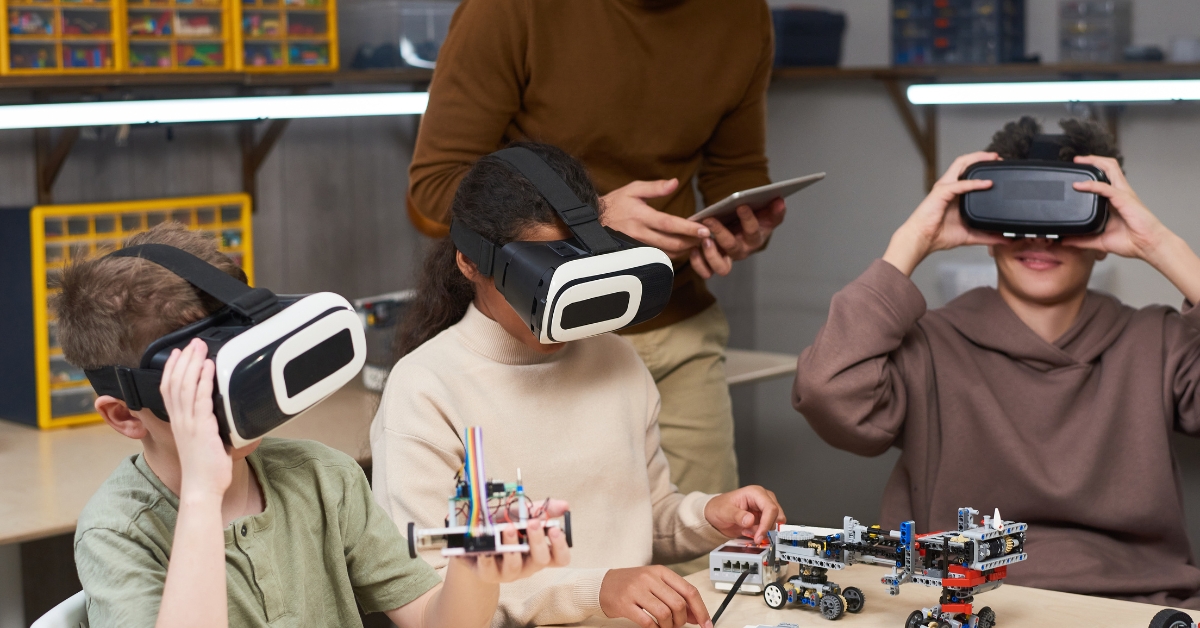Building Interactive VR Applications: Essential Features and Considerations

Introduction
Virtual Reality (VR) applications offer users immersive, interactive experiences that transport them into digital environments. The power of VR lies in its ability to engage users not just visually, but also through interactions, creating a dynamic experience that traditional media cannot match. Building practical interactive VR applications requires careful attention to several key features and design considerations. Here’s a breakdown of the essential elements and factors developers need to consider when creating successful VR applications.
1. Intuitive User Interface (UI) and Interaction Design
One of the most critical aspects of an interactive VR application is its user interface. Unlike traditional applications, VR interfaces need to be designed for 3D space and should feel intuitive. The UI should be simple, straightforward, and easy to navigate, ensuring that users can interact with the virtual environment seamlessly. Interaction methods, such as hand tracking, voice commands, and controller-based inputs, should feel natural and responsive to the user’s movements.
In VR, creating intuitive controls is essential to avoid user frustration or disorientation. Think about how users will interact with objects, menus, and the environment. Avoid complex gestures or actions that may confuse or overwhelm users, and prioritize ease of use.
2. Realistic and Engaging Environments
Immersive environments are the heart of any VR experience. For users to fully engage, the virtual world must feel lifelike, with high-quality 3D models, dynamic lighting, and realistic sound design. Whether you are building a game, a training simulation, or a virtual tour, attention to detail is key to keeping users immersed.
Additionally, environmental factors like scale and perspective play a crucial role in user engagement. Developers should consider how users move within the space and how the environment responds to their actions. Interactive objects that respond in real-time (such as doors opening or lights turning on) will make the experience more engaging and believable.
3. Performance Optimization
VR applications require a high level of processing power, particularly when rendering complex 3D environments and engaging in real-time interactions. Performance optimization is crucial for delivering a smooth, immersive experience and preventing lag, which can cause discomfort or motion sickness for the user. Ensure that the application runs at a high frame rate with minimal latency, especially during interactive elements where precision is critical.
4. Comfort and Safety
User comfort is paramount in VR, as poorly designed experiences can lead to motion sickness or fatigue. To enhance comfort, design your VR applications with user safety in mind. Avoid rapid, jerky movements and consider offering options for adjusting motion settings (such as teleportation or smooth movement). Allow users to customize settings, such as motion speed and visual preferences, to accommodate different comfort levels.
Conclusion
Building interactive VR applications involves creating an immersive, intuitive, and engaging experience for users. By focusing on easy-to-use interfaces, realistic environments, performance optimization, and user comfort, developers can create VR applications that captivate and keep users engaged. As VR technology continues to evolve, these considerations will be crucial in shaping the future of interactive digital experiences.
#VRDevelopment #InteractiveApps #UserExperience #VirtualReality #GameDesign #PerformanceOptimization #VRInterface #ImmersiveTechnology #VirtualEnvironments #TechDevelopment

